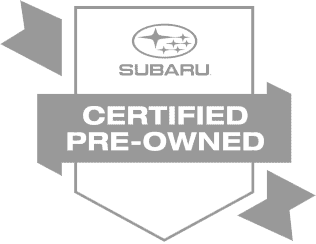
Your Subaru Outback's or Forester's all-wheel-drive (AWD) system relies on your tires wearing evenly to properly function, making regular tire rotation far more essential than most owners realize. Think of it this way: while standard front-wheel-drive cars tolerate some uneven tire wear just fine, your Subaru's AWD system constantly watches tire speeds and shifts power accordingly. This can lead to uneven tread depths that will damage your drivetrain if not caught in time. To learn more about how to spot tread issues and when to schedule a rotation, check out this guide from our team at Great Falls Subaru.
Official Subaru Maintenance Schedule Recommendations
Many of our customers ask, "Do you have to rotate the tires on an AWD vehicle?" The short answer is yes. In general, you should rotate your tires every 5,000 to 7,500 miles, though there are many other factors at play. Subaru recommends scheduling major service checks every 30,000 miles and rotating your tires every 6,000 miles, which conveniently lines up with oil change intervals. By planning your service timeline in advance, you can maintain your Subaru's AWD system without having to make extra appointments.
Time affects your rotation schedule just as much as mileage does. Throughout the year, temperature cycles and UV exposure can all impact your tires' life span, no matter how many miles are on the vehicle. In fact, because of this, the 2025 Subaru Forester Limited's manual suggests rotating your tires every six months, regardless of your mileage.
Signs Your Subaru Needs Immediate Tire Rotation
It's easy to check if it's time to rotate your tires. Simply run your palm across each tire's tread. What you feel can indicate different problems:
- Feathering: If your tires feel smooth one way but rough in the other, this means the alignment's off.
- Cupping: If you feel scalloped patches, check your suspension and tire balance.
- Worn shoulders: The outer edges of tires often wear first, especially if you regularly drive on winding roads.
- Inconsistent wear patterns: Your AWD system is working overtime and is likely straining other expensive components.
Your tires are the only part of your Subaru that touches the road, so uneven wear can affect everything from braking to cornering. You may notice your vehicle pulling to the side on straight roads, vibrating at higher speeds, and losing traction when turning. Winter driving can make these symptoms worse as your AWD system works double duty for more traction. Your Subaru should feel rock-solid, so any change in steering response is a sign to call your technician.
Just a one-sixteenth-inch variation between any two tires can damage your center differential — that's barely the thickness of a penny. As your tread becomes more uneven, the strain on your drivetrain increases. When one tire has less tread, it spins slightly faster, but your AWD system interprets this as wheel slip. Your transfer case, center differential, and viscous coupling then work overtime to correct a nonexistent problem. This constant compensation creates heat, wear, and stress on parts never designed for such a continuous load. This damage accumulates silently until something expensive breaks, which can cost you thousands.
Factors That May Require More Frequent Rotation
With Montana's unique weather and terrain, there are several factors to consider when planning your tire rotation schedule.
Terrain
One important factor to consider is Montana's rugged terrain. Dirt roads to fishing spots, gravel shortcuts, and forest service roads all eat away at your tires faster than regular highway driving. While Subaru Outbacks are meant for outdoor adventures, rough terrain can wear the suspension down faster. If you're an off-road enthusiast, you should rotate your tires every 3,000 to 5,000 miles to be safe.
Habits
Your driving style and daily needs can also dramatically affect when to rotate your tires. Foresters typically carry more weight than Imprezas, with passengers, cargo, and roof racks pressing on your tires differently. Weekend trips hauling gear or daily school runs with kids put extra stress on the rear tires versus the front. Highway cruising is easier on your tires than stop-and-go city traffic. Be honest about your habits — quick starts, hard braking, and fast cornering will wear your tires out sooner and less evenly than mindful driving.
Weather
Montana's weather has a significant impact on your tires. Temperatures can swing from minus-20-degree winters to 90-degree summers, meaning your tires' rubber can deteriorate even when parked. Tire pressure drops roughly 1 psi with every 10 degrees in temperature, causing your tire pressure to fluctuate between 5 and 7 psi throughout the year. This cycle can affect road contact and create uneven wear patterns.
In the summer, asphalt can heat up to 140 degrees, softening your tires' rubber and accelerating wear patterns, whereas in the winter, your tires become less flexible, and ice and snow decrease traction. Daily temperature fluctuations of over 40 degrees stress your tires beyond what milder climates experience and can crack and age rubber compounds, making regular tire rotation vital for avoiding blowouts.
Maximize Your Subaru's Performance With Proper Tire Care
Regular tire rotation comes with many extra benefits beyond longevity. Properly maintained tires last thousands of miles longer, saving you an average of $600 to $800 on replacements. Balanced tread wear increases your vehicle's grip and improves stopping distances, keeping your family safer. It also lowers the risk of blowouts and tread separation, and less rolling resistance leads to better gas mileage. For Great Falls residents such as you, this means reliable transportation and lower lifetime costs.
Your Subaru's AWD system depends on regular rotations to keep your tires wearing at the same rate. The proper way to rotate your tires is the X pattern, where each tire moves diagonally (front left to rear right and rear left to front right). When tread wear stays even, everything works in harmony. Driving on mismatched tires is one of the quickest ways to damage your AWD systems, and the repair prices for that make your Subaru's tire-rotation costs look like pocket change. Regular maintenance protects your vehicle's resale value too, maintaining the efficiency and reliability Subarus are famous for.
Schedule a Tire Rotation Today With Great Falls Subaru
Whether you're commuting through Great Falls or exploring Montana's backcountry, your AWD system demands consistent tire care to deliver the performance you paid for. To get the most out of your Subaru, talk to experts who understand your vehicle's complex systems. Schedule your next tire rotation with our factory-trained specialists at Great Falls Subaru. We'll check for uneven wear and recommend a personalized rotation schedule that fits your lifestyle. Your Outback or Forester will reward you with years of trouble-free performance and outdoor capability.
A Man in Blue Coveralls Holding a Tire by Artem Podrez is licensed with Pexels License



